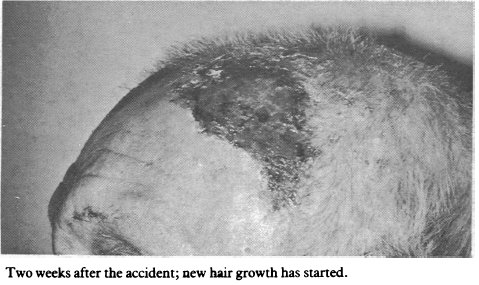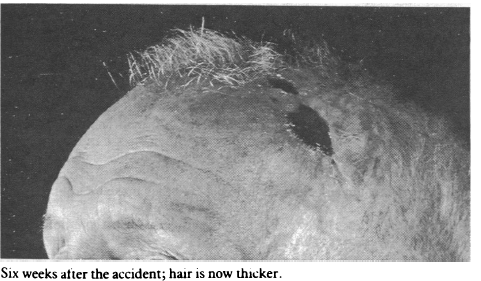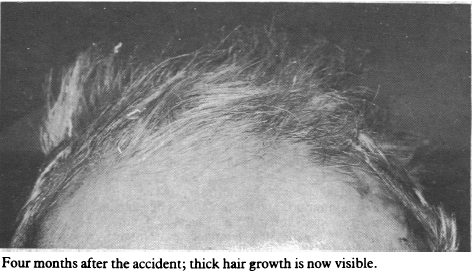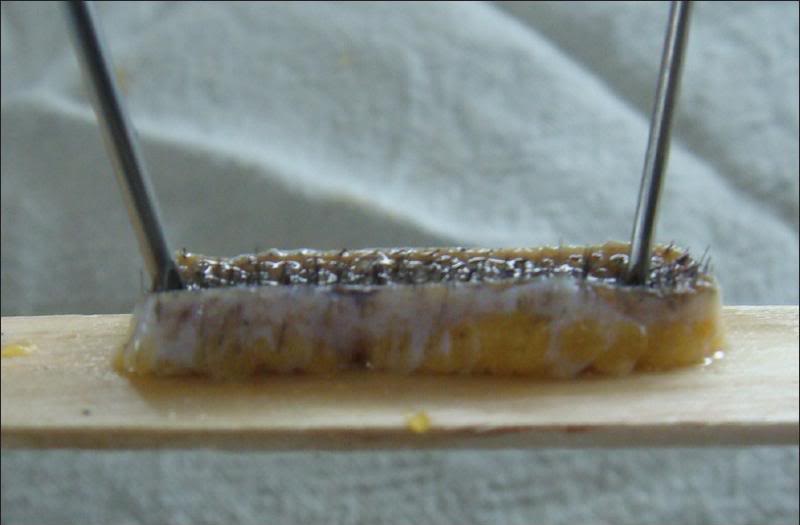Belief.. The problem with Androgen Alopecia is that people only focus on the obvious, the scalp and the esthetic problem of thinning /missing hair.
The problem starts at the cellular level.. not at the physical level.
DHT is a powerful steroid sex hormone than can or cannot trigger a chronic inflammation. This is why some people go bald or not going bald.
There are several studies out there proving a relation between early balding and signs of atherosclerosis or dyslipidemia.
DHT promotes VCAM-1 and NF-KB expression . Both related to theses diseases. The tight Galea theory has nothing to do with this. It is maybe a side-effect of the local chronic inflammation, no the problem itself. LOL
http://www.ncbi.nlm.nih.gov/pubmed/14684616
http://www.ncbi.nlm.nih.gov/pubmed/18941467
Is androgenetic alopecia a risk for atherosclerosis?
Dogramaci AC,
Balci DD,
Balci A,
Karazincir S,
Savas N,
Topaloglu C,
Yalcin F.
Author information
Abstract
BACKGROUND:
Several studies have demonstrated the presence of an association between androgenetic alopecia (Androgenetic Alopecia) and cardiovascular disease. The aim of this study was to evaluate subclinical atherosclerosis in patients with Androgenetic Alopecia and healthy controls by the incorporation of carotid intima-media thickness (IMT) and high-sensitive C-reactive protein (hs-CRP) along with echocardiography (ECHO) and exercise electrocardiography (ExECG).
METHODS:
We performed a case-control study in 50 male patients with Androgenetic Alopecia and 31 age-matched healthy male controls with normal hair status. Both the Androgenetic Alopecia patients and controls with a history of diabetes mellitus, cigarette smoking, hypertension, cardiovascular or cerebrovascular disease, and renal failure were excluded. Androgenetic Alopecia was classified according to the Hamilton-Norwood scale. Serum lipids, serum hs-CRP, total testosterone, and dehydroepiandrosterone sulphate were examined in all study subjects. Carotid ultrasonography was used to measure the IMT of the common carotid arteries (CCA). ECHO and ExECG were performed in all subjects.
RESULTS:
IMT of the CCA was found to be significantly higher in patients with severe vertex pattern Androgenetic Alopecia when compared to patients with other patterns of Androgenetic Alopecia and healthy controls (P < 0.05). Hs-CRP in patients with any group of Androgenetic Alopecia was not significantly different from those healthy controls (P > 0.05). ECHO showed that cardiac structural and functional measures were in normal ranges. ExECG was also normal in all subjects.
CONCLUSION:
Severe vertex pattern Androgenetic Alopecia should be considered to have an increased risk of subclinical atherosclerosis. For this reason, CCA IMT measurement can be recommended as a non-invasive and early diagnostic method.
Early onset of androgenetic alopecia associated with early severe coronary heart disease: a population-based, case-control study.
Matilainen VA,
Mäkinen PK,
Keinänen-Kiukaanniemi SM.
Author information
Abstract
CONTEXT:
The relationship of ischaemic heart disease (IHD) with androgenic alopecia (Androgenetic Alopecia) has been demonstrated, but no differentiation between early and late onsets of alopecia with regard to the risk and severity of IHD has been made.
OBJECTIVE:
To test if the early onset of alopecia is a risk factor for early severe, coronary artery disease (CAD) requiring surgery and to test if the early onset of Androgenetic Alopecia differs in this respect from the late onset of Androgenetic Alopecia.
DESIGN:
Population-based case-control study.
SETTING AND PARTICIPANTS:
All the 85 male persons living on 31 December 1999 in a Finnish town with total population of 7200, who had had a coronary revascularization procedure between March 1987 and January 1999, were drawn from the discharge register. For each case, an individually selected age-matched control person living in the same town was drawn from the official census register.
MAIN OUTCOME MEASURE:
Alopecia defined as grade 3 vertex or more on the alopecia classification scale of Hamilton, modified by Norwood South Med J, 68:1359-1365, 1975.
RESULTS:
The unadjusted odds ratio (OR) for coronary revascularization under the age of 60 years was 3.57 (95% confidence interval (CI) 1.19-10.72) in men with an early onset of Androgenetic Alopecia compared with men with normal hair status or late Androgenetic Alopecia. After multivariate adjustment for the traditional CAD risk factors, the corresponding OR was 3.18 (95% CI, 1.01-10.03). The unadjusted OR for the coronary revascularization procedure at any age was 2.14 (95% CI, 1.08-4.23) in the subgroup of the men with early Androgenetic Alopecia compared to those with late Androgenetic Alopecia or normal hair status. After adjustment for traditional risk factors this OR was 1.84, being nearly significant (95% CI, 0.90-3.77).
CONCLUSION:
Our results support the hypothesis that the early onset of Androgenetic Alopecia is a risk factor for an early onset of severe coronary heart disease.
A comparative study of dyslipidaemia in men and woman with androgenic alopecia.
Arias-Santiago S,
Gutiérrez-Salmerón MT,
BuendÃa-Eisman A,
Girón-Prieto MS,
Naranjo-Sintes R.
Author information
Abstract
Several studies have analyzed the relationship between androgenetic alopecia and cardiovascular disease (mainly heart disease). However few studies have analyzed lipid values in men and women separately. This case-control study included 300 patients consecutively admitted to an outpatient clinic, 150 with early onset androgenetic alopecia (80 males and 70 females) and 150 controls (80 males and 70 females) with other skin diseases. Female patients with androgenic alopecia showed significant higher triglycerides values (123.8 vs 89.43 mg/dl, p = 0.006), total cholesterol values (196.1 vs 182.3 mg/dl, p = 0.014), LDL-C values (114.1 vs 98.8 mg/dl, p = 0.0006) and lower HDL-C values (56.8 vs 67.7 mg/dl, p <0.0001) versus controls respectively. Men with androgenic alopecia showed significant higher triglycerides values (159.7 vs 128.7 mg/dl, p = 0.04) total cholesterol values (198.3 vs 181.4 mg/dl, p = 0.006) and LDL-C values (124.3 vs 106.2, p = 0.0013) versus non-alopecic men.
A higher prevalence of dyslipidemia in women and men with androgenic alopecia has been found. The elevated lipid values in these patients may contribute, alongside other mechanisms, to the development of cardiovascular disease in patient with androgenic alopecia.





